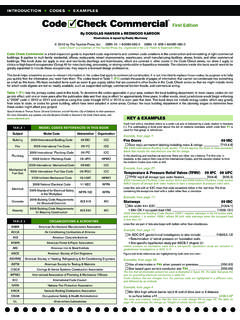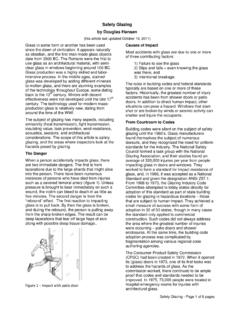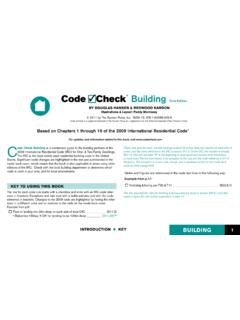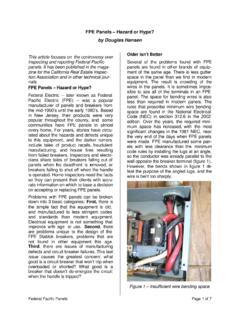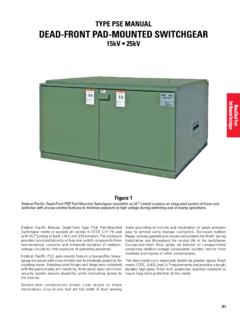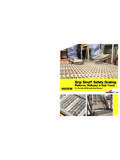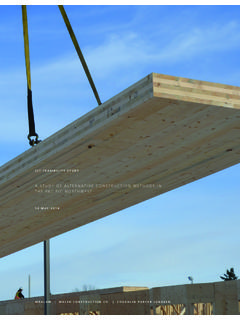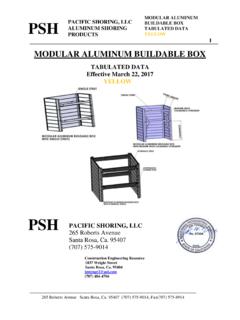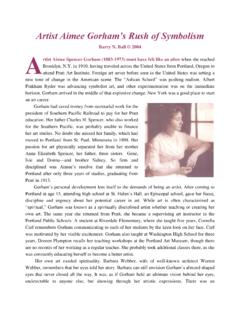Transcription of Federal Pacific Electric - Code Check
1 Page 1 Federal Pacific ElectricFederal Pacific ElectricDouglas Hansen & Redwood Kardon (last updated 12/22/2012)A home inspector and mutual friend invited us to see a curious thing he had found during his inspection. A small fused switch in the basement was controlled by a 30-amp breaker in the basement subpanel, made by Federal Pacific Electric (FPE). When the inspector turned on the 30-amp FPE breaker, the fused switch started smoking. He then turned it back off. Ahead of this 30-amp Federal Pacific breaker was another Federal Pacific panel with a 100-amp main breaker and a 60-amp breaker feeding the basement subpanel.
2 The house was vacant and the breakers were all off. We weren t very well equipped. A small multimeter was our only tool for investigating possible shorts in the fused switch, and we didn t discover any abnormalities with the power off. We turned on the 30-amp subpanel breaker. We went upstairs to the service and turned on the 60-amp breaker, and then the 100-amp Instantly, the entire wall holding the panel started shaking. There was a loud buzzing sound, and then an eerie whooshing sound overhead. Looking up we saw the individual overhead service conductors being whipped through the air, reacting violently to the high magnetic fields caused by carrying thousands of amps of current.
3 I held my breath and reached for the main breaker. Fortunately, it did turn off the was the day I began to learn there was something to the stories I had been hearing about Federal Pacific Electric . We had a short circuit that drew so much current the service conductors were almost torn from the building. Three FPE breakers carrying this current each failed to respond to this short the ConcernsFor years I had wondered whether the mere presence of an FPE panel warranted a recommendation for replacement. They were not without their defenders, and this particular brand was ubiquitous in some areas.
4 There are millions of FPE panels in use, and they have UL labeling. How could they be as bad as the rumours we were hearing? FPE was one of the most popular brands of equipment from the 1950 s through the early 1980 s, and didn t quit making breakers until 1986. Broadly speaking, FPE has three cat-egories of problems:1. They are old and built to lesser standards and codes than more modern They were poorly engineered, with many unique problems not found in other Many of their breakers are defective, and should not have been allowed on the last of these 3 issues is the gravest concern, since the record shows that the manufacturer knew their product did not meet UL standards and intentionally deceived the regu-lators to obtain their isn t BetterSeveral of FPE s problems are typical of other old panels.
5 There is less wiring space, especially opposite main lugs and breakers, and the result is a crowded panel (figure 1). Over the years, the minimum wiring space required in codes and standards has increased. Significant changes occurred in the 1981 NEC, near the end of FPE s existence as a panel manufacturer, when the amount of space was increased for conductors needing to make more than one bend to exit the panel. Figure 1 - Crowded FPE PanelFPE sometimes installed their main lugs or main breaker terminals at an angle which enabled them to construct the panel with less wiring space.
6 This method was no longer allowed after 1984 for conductors needing to make two bends in that wiring panelboard assemblies and bus bars on several of the FPE models were set on springs, with a depth adjust-ment that enabled the position of the breakers to be moved forward or backward. For a recessed panel, this feature allowed the breakers to be brought out flush to the dead-front cover even if the panel was (improperly) set too far back into the wall. The NEC has required rigid mounting for buses since 1981. The entire spring-loaded bus sometimes moves simply from operating a breaker handle.
7 The break-ers might also press against the deadfront cover, causing it to pop forward when its screws are removed. Larger FPE panels might have two of these adjustment screws. Page 2 Federal Pacific ElectricSince the 1984 edition of the NEC, breakers that operate with their handles in a vertical position must be on when in the up position, and off in the down position. Prior to that time, several manufacturers made equipment such as that seen in figure 2, with a row of breakers that was on when down and off when up. The word on when upside down is no. Figure 2 - 1960s FPE PanelInspectors might find that their first challenge with FPE is the difficulty in removing the deadfront cover without tripping the breakers.
8 Several models of FPE panels have breakers that are on when the handle is positioned toward the outside of the panels (figure 2). The handles stick out slightly over the deadfront, past the twist-out opening for the breaker. To remove the cover, it is necessary to first lift it slightly away from the panel, then to slide it under the handles of one row while lifting the cover off the other row. Once the cover has cleared the other row, it has to be slid back under the han-dles of the first row, and then it can be removed. If an inspec-tor pulls the cover straight off, some of the breakers will accidentally trip.
9 The spring-loaded bus mounts sometimes cause this to happen as soon as the last screw is loosened. Since 1971, breakers capable of interrupting a short circuit of 10,000 amps must be marked with their interrupting rat-ing. Breakers without a marking are presumed to only be capable of interrupting a 5,000 amp short circuit or ground fault. Utilities attempt to limit the available short circuit cur-rent to residences to 10,000 amps. Breakers not marked with an interrupting rating might have contacts that melt or fuse together, or might have jamming of the mechanical trip-ping components at currents less than 10,000 Engineering The Stablok DesignMost plug-in circuit breakers connect with spring-ten-sion jaws that clasp over a bus bar.
10 The FPE Stablok design is the opposite. The breakers have metal stabs that insert into a socket in the bus bar. The connection is between two pieces of metal at right angles to each other, only touching at their edges. The contact area between the breaker and bus is significantly less than with other brands, and this critical connection has higher resistance. As with other manufacturers, FPE made full-width break-ers as well as tandem breakers, where two breakers fit into the same physical space as one full size breaker. UL has a standard for a Class CTL panel that limits the number of breakers based on the overall panel rating.
